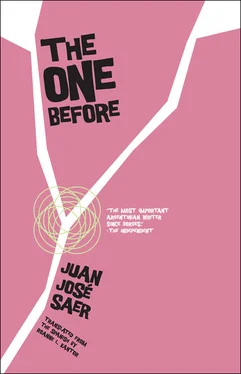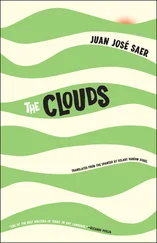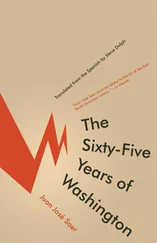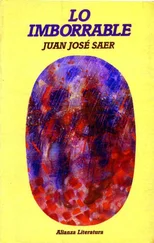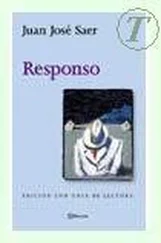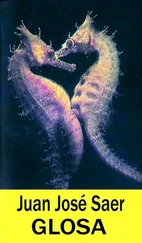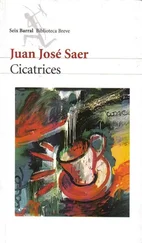Juan José Saer
The One Before
A pilgrim’s footsteps always wander
— Luis de Góngora, Los soledades
Soon after completing the translation you are about to read, I was invited to speak at a conference on Saer in Buenos Aires. The panel was titled, rather provocatively, “Is It Possible to Translate Juan José Saer?”
I leave this question for the reader to judge. What I can say with certainty is that Saer’s writing generally, and The One Before in particular, is deeply concerned with the theme of translation and its limits. This includes, of course, a few examples of straightforward linguistic translation, as in the case of Filipillo, the young indigenous man conscripted as a translator for the Spanish conquistadors in “The Interpreter.” More often, however, Saer’s concern with translation is manifest in larger questions about the possibility of representing human experience in any language. Stories like “On Dry Shore,” “The Lookalike,” and “Friends” speak to his hope that writing would be adequate to the task of preserving a particular moment or a particular perspective on the world. Others suggest profound doubt about the ability of language to capture these moments, and the sneaking suspicion that the coherence imposed on human memory by the narrative form is, at bottom, a mirage.
These ideas reach their pinnacle in the titular story, “The One Before.” An unidentified narrator, probably the recurring character Carlos Tomatis, becomes increasingly disoriented as he recalls the same set of events over and over again, gradually losing his faith in the relationship between successive moments in time. Here Saer takes up the challenge he lays out in another story, “Memories.” The task is to create a narrative that is authentic to memory itself — a “circular narrative” in which the “position of the narrator would be like that of a boy who, riding a horse on a merry-go-round, tries at each pass to snatch a steel loop from the ring.” And yet The One Before is also a text that relies on the coherence of memory, citing and even playfully translating others, most notably Marcel Proust and Maurice Merleau-Ponty.
We might also understand this collection to refer to translation at its etymological origins — to move from one place to another. The stories “Argument Over the Term ‘Zone’,” “Abroad,” “A Change of Residence,” and others reflect on the dislocation Saer experienced when he moved permanently from Santa Fe to Paris in 1968. “Half-Erased” explores this theme through the perspective of another recurring character in Saer’s oeuvre, Pigeon Garay. In the story, Pigeon spends the last days in the city of his birth searching fruitlessly for his twin brother, Cat, while a catastrophic flood progressively obliterates the familiar landscape around them. Decades later, Pigeon will return to Santa Fe in the novel The Investigation , only to find that the erasures of his initial “translation” can never be undone.
In his famous and oft-cited essay on translation, “The Task of the Translator,” Walter Benjamin writes, “A real translation is transparent; it does not cover the original, does not block its light, but allows the pure language, as though reinforced by its own medium, to shine upon the original all the more fully.” Borrowing Saer’s own words from “Letter to the Seer,” I close the introduction to these stories with the hope that I have let his light shine in them, if, indeed, one of the modes of his writing is to shine.
A Layman’s Thoughts on Painting
I think more about frames than paintings. My preference: altarpieces and images of the Way of the Cross. Between each station on the Way of the Cross is the empty wall. It goes unrecognized as the true frame holding in the pathetic magic of feeling without allowing it to spill from its borders toward the ocean of oil that is indeterminacy. The frame shows that Christ was crucified; it preserves his sacrifice for us and saves us from the confusion of his hesitations, his stubbornness, and his fear. We owe the frame perspective, perfect profiles, and the most surprising accomplishment of painting: concrete abstraction.
The docent of the municipal museum thinks I’m crazy because he’s seen me looking at the empty wall. It looks white in the sense of white-hot; the red, symbol of heat and passion, becomes invisible through abundance and excess. So much of the same feeling neutralizes itself and blinds the rest and then we feel unworthy to keep looking. How can I explain such a thing to my friends who are painters? Each picture looks to me like a white wall that has been diminished, attenuated. Perhaps the word “cut” would serve, as when we say to cut wine with water. Thus, the art of painting is for me the art of reduction. Let us honor the frame, because from uniformity it creates the variety of the passion. Rainbows reign in the sky for a moment and then fade, in the afternoon, into the arms of a night darker and more indistinguishable than fire.
Regarding a Literary Argument
We began nice and early in the morning. When, seven hours later, we were still arguing after having eaten lunch, something in the room was different, and I’m not talking about the light that had changed over time, or about the cigarette smoke, or about the notes or abstract doodles which now sullied papers that once were white. Arguments at the height of summer! I know what I’m talking about, but the more I try, the less able I am to say it. It’s a state of the world so uncertain and banal that no one has ever invented a term to adequately describe it. Perhaps nothing really is happening and I, purely out of vertigo, have set about trying to pin down some unnamable thing in the very center of nothingness. But let’s just say that something happened: not the smoke, nor the papers, nor the light, nor the tables, nor the people, nor the themes up for discussion were the same as they had been at nine in the morning. Baroque variants: there was never any morning, or rather, this moment stands alone, the word “was” is only real when it is said (you might say it’s nothing more than a sound), and now there is nothing more than the great wide space where everything is clear, as I see it now, freshly sprouted and swarming, what we call the present.
Well directed, a single example can serve to suggest diversity, even infinity. We, members of a cultural commission, discussed the possibility of updating and disseminating, for the public benefit of the city, a classic work — Cervantes, let’s say. We split up the basic ideas of Don Quijote , a product of fundamental facts. First, to order it historically, is the great envelope into which we were born and which we call the world, one of whose parts is the general opinion that Don Quijote is a masterpiece. (Another of its parts is Don Quijote , naturally.) The second fact is our reading of Don Quijote . I like to compare this reading to the times I spent hours playing with a mirror, making the sunlight bounce off of its smooth surface, filling up the room with mobile stains of light and dazzling glimmers. Seven hours after we began, the two suppositions have gotten so far away from our immediate experience that, without suggesting that they have been erased, I would venture to say that their relation to our debate is the same as the foundation of a house to its architectural style and the arrangement of its rooms; it sustains them, but no one sees it, and no one has ever seen it besides the engineers who constructed it. At the mouth of the tunnel of warm weather that has passed since this morning, what the world knows about Cervantes and Don Quijote is now filled in, densely, opaquely, no less arid than the arid walls our voices echoed against, nor less compact than the words that fall continually from our brains to our mouths and raise continually from the air to our minds. And once again I begin to feel that something is changing, without knowing what, without knowing how to express it, or knowing if it is even really changing, without knowing if I am able or if it would be worthwhile to say so, if it is true that it has really changed. With just one step one could pass from this state of strangeness into horror. From here the possibility of writing a new classic is almost nil: that’s why I said an argument on the edge of summer.
Читать дальше
